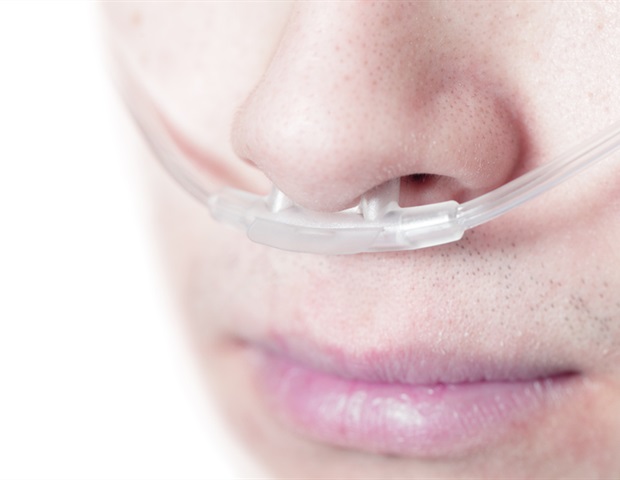A small randomized trial in patients with post-COVID syndrome has found that hyperbaric oxygen therapy promotes restoration of the heart's ability to contract properly. The research is presented at EACVI 2023, a scientific congress of the European Society of Cardiology (ESC).
The study suggests that hyperbaric oxygen therapy can be beneficial in patients with long COVID. We used a sensitive measure of cardiac function which is not routinely performed in all centers. More studies are needed to determine which patients will benefit the most, but it may be that all long COVID patients should have an assessment of global longitudinal strain and be offered hyperbaric oxygen therapy if heart function is reduced."
Marina Leitman, Study Author, Professor, Sackler School of Medicine, Tel Aviv University and Shamir Medical Centre, Be'er Ya'akov, Israel
Most COVID-19 sufferers fully recover, but after the initial illness approximately 10–20% of patients develop long COVID, also called post-COVID condition or syndrome. Symptoms include shortness of breath, fatigue, cough, chest pain, rapid or irregular heartbeats, body aches, rashes, loss of taste or smell, nausea, vomiting, diarrhea, headache, dizziness, insomnia, brain fog, depression and anxiety. Patients with post-COVID syndrome may also develop cardiac dysfunction and are at increased risk of a range of cardiovascular disorders.
This randomized controlled double-blind trial evaluated the effect of hyperbaric oxygen therapy (HBOT) on the cardiac function of long COVID patients. HBOT involves inhalation of 100% pure oxygen at high pressure to increase delivery to the body's tissues, which is particularly beneficial for tissues that are starved of oxygen due to injury or inflammation. HBOT is an established treatment for non-healing wounds, decompression sickness in divers, carbon monoxide poisoning, radiation injury and certain types of infections
The study enrolled 60 post-COVID syndrome patients with ongoing symptoms for at least three months after having mild to moderate symptomatic COVID-19 confirmed by a PCR test. Both hospitalized and non-hospitalized patients were included. Severe COVID cases were excluded. Patients were randomized to HBOT or a sham procedure in a 1:1 ratio. Each patient had five sessions per week over eight weeks, for a total of 40 sessions. The HBOT group received 100% oxygen through a mask at a pressure of 2 atmospheres for 90 minutes, with 5 minute air breaks every 20 minutes. The sham group breathed 21% oxygen by mask at 1 atmosphere for 90 minutes. All participants underwent echocardiography at baseline (before the first session) and 1 to 3 weeks after the last session.
Echocardiography was used to assess left ventricular global longitudinal strain (GLS), which is a measure of the heart's ability to contract and relax lengthwise. It indicates how well the heart is functioning and can help detect early signs of heart disease. A healthy heart will have a GLS value of around -20% which means that the heart muscle is able to properly contract and relax in the longitudinal direction. Reduced GLS is an early marker that the heart is not able to contract and relax effectively.
At baseline, nearly half of study participants (29 out of 60; 48%) had reduced GLS. Of those, 13 (43%) and 16 (53%) were in the sham and HBOT groups, respectively. The average GLS at baseline across all participants was -17.8%. In the HBOT group, GLS significantly increased from -17.8% at baseline to -20.2% after the intervention (p=0.0001). In the sham group, GLS was -17.8% at baseline and -19.1% after the sessions, with no statistically significant difference between the two measurements.
Professor Leitman said: "It was notable that almost half of long COVID patients had impaired cardiac function at baseline according to GLS despite all participants having a normal ejection fraction, which is the standard method for measuring the heart's ability to contract. This means that ejection fraction is not sensitive enough to identify long COVID patients with reduced heart function."
She concluded: "The findings suggest that HBOT promotes recovery of cardiac function in patients with post-COVID syndrome. More research is needed to collect long-term results and determine the optimal number of sessions for maximum therapeutic effect."
European Society of Cardiology
Posted in: Medical Research News | Medical Condition News
Tags: Anxiety, Brain, Brain Fog, Carbon Monoxide, Cardiology, Chest Pain, Computed Tomography, Coronavirus, Cough, covid-19, Depression, Diarrhoea, Education, Fatigue, Headache, Health Care, Heart, Heart Disease, Imaging, Inflammation, Insomnia, Medicine, Muscle, Nausea, Oxygen, Oxygen Therapy, Pain, Poisoning, Research, Syndrome, Tomography, Vomiting
Source: Read Full Article



